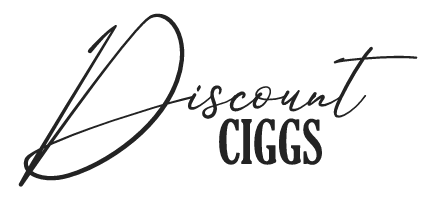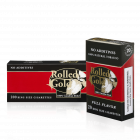Color Symbolism in Cigarette Packaging
Colors in packaging aren't chosen randomly. In cigarette packaging, this selection is more critical. The hues are used to convey more than aesthetic appeal—they carry significant symbolic meanings. These color choices send nuanced messages, subtly guiding the perceptions and reactions of consumers. Decisions around color stem from careful consideration by both designers and marketers, highlighting the profound role it plays in the branding of tobacco products. Beyond the physical appearance, these colors tap into psychological cues, affecting the way consumers view and interact with the product.
Historical Perspective of Color in Cigarette Packaging
Golden Age of Advertising
The 1950s marked a transformative era, particularly in the world of media and advertising. Televisions started gracing most living rooms, becoming integral to family entertainment. Simultaneously, print media was enjoying its heyday, capturing the attention of the masses. This period, often dubbed the 'Golden Age of Advertising,' paved the way for innovative marketing strategies, and cigarette packaging stood at the forefront of this revolution. Cigarette brands started experimenting with color palettes, using them not just as decorative elements but as strategic tools to carve their niche in the market. Vibrant and captivating hues became synonymous with cigarette packages, each attempting to convey a unique brand essence.
Yet, the choice of these colors wasn't arbitrary. There was a method to the madness. Colors were meticulously chosen to resonate with specific emotions or sensations, reflecting the careful consideration of designers and advertisers. Red, for instance, wasn't just a bright shade on a pack; it represented power, vigor, or even passion, appealing to those seeking a bold smoking experience. On the other hand, the calm and refreshing green on a cigarette package often signaled a menthol flavor, catering to those who sought a cool, fresh puff. Through these color choices, brands communicated more than just a visual appeal; they told stories, evoked emotions, and built lasting connections with their consumers.
The Bold and the Bright: 1980s and 1990s
The transition from the 1950s to the 1980s and 1990s brought about significant shifts in cultural and aesthetic sensibilities. This change was vividly illustrated in the world of advertising, especially in cigarette packaging. As the decades rolled on, the design ethos underwent a transformation. Brands eagerly embraced a palette that was both vibrant and daring. Neon colors, once reserved for niche products, started dominating the cigarette packaging landscape. The intensity and brilliance of these shades became symbolic of the times – capturing the vibrant spirit and energetic pulse of youth culture. There was a palpable shift in design aesthetics, with brands attempting to resonate with the newer generation, characterized by its zest for life and a penchant for everything fresh and dynamic.
However, this flamboyant shift to neon was not merely a whimsical design choice. Beneath the surface of these radiant colors lay a deeper strategy. Brands weren't just chasing trends; they were tapping into the psyche of their target audience. The brilliant hues and bold designs weren't just about catching the eye. They were deliberate attempts to connect with the emotions and aspirations of the youth. It raised the question: Was this emphasis on bold colors solely about staying fashionable, or was there an intricate dance of psychology at play? This era of cigarette packaging exemplified how brands were evolving, understanding that packaging wasn't merely about containment but about conveying emotion, identity, and an unspoken promise to the consumer.
Psychological and cultural implications of colors in packaging design.
Colors and Their Respective Emotions
Colors possess an inherent power, one that extends beyond mere visual appeal. Delve deeper, and one realizes that each hue, whether vibrant or muted, has the potential to stir emotions, create moods, and even shape perceptions. Take blue, for instance. Predominantly, it's seen as a shade that resonates with feelings of trust, calm, and serenity. It's no wonder then that many brands use blue in their logos or packaging to exude reliability. Similarly, yellow, with its bright and cheerful aura, often evokes sensations of joy, optimism, and energy. It's the color of sunshine, after all, symbolizing hope and positivity.
Brands, over the years, have become increasingly adept at leveraging this profound connection between colors and emotions. Their goal is clear – to engage the consumer at a subconscious level. The choice of a particular color for a product's packaging isn't just about aesthetics or standing out on a shelf. It's a strategic move, grounded in psychology and cultural studies. By aligning their products with specific emotions through color, brands aim to influence purchasing decisions, even if the consumer isn't overtly aware of it. This subtle dance between color and emotion underscores the depth of thought and research that goes into design choices, highlighting the nuanced layers of communication that packaging can convey.
Color Choices and Target Demographics
When you stroll through a shopping aisle, have you noticed how certain products seem to 'pop' with vibrant, energetic colors, while others exude a sense of maturity with their understated tones? This isn't a mere design whim. Brands meticulously craft their packaging colors, aligning them with specific target demographics. Youth-oriented products often revel in bold and lively colors, mirroring the enthusiasm and vivacity of younger consumers. These shades are not just eye-catching but resonate with the dynamism and zest of the age group.
Conversely, products tailored for an older, more mature audience tend to adopt a more subdued and refined color palette. This is not just about aesthetics but a conscious acknowledgment of the tastes and preferences of this demographic. Such colors often exude elegance, trustworthiness, and timelessness, traits highly valued by older consumers. The choice of color in packaging is a strategic move by brands, a silent communicator, subtly echoing the aspirations, values, and emotions of their target market. Through these color decisions, brands foster a deeper connection, ensuring their product resonates with the intended audience, both visually and emotionally.
Trends in color choices over the decades.
Evolution of Tobacco Branding
Over the years, the tobacco industry has witnessed significant shifts in branding trends, especially when it comes to color choices. In earlier days, cigarette packaging was characterized by its bright and vivacious colors, embodying an era where the risks of smoking were either unknown or under-discussed. These lively hues served as an emblem of style, modernity, and even affluence, enticing consumers to light up without a second thought. However, as the curtain lifted and revelations about the health implications of smoking began to dominate public discourse, there was a perceptible change in the branding landscape.
The vibrant and audacious shades that once symbolized the allure of smoking started to gradually recede. In their place emerged more neutral, subdued color palettes, mirroring the changing societal perceptions of tobacco consumption. These muted tones, often associated with caution, possibly represented a more conscious and informed choice by brands. They recognized the growing concerns and adjusted their branding strategy accordingly, aiming to portray a more responsible image. This evolution of color trends in cigarette packaging offers a fascinating insight into how brands adapt and respond to societal shifts, ensuring they remain relevant and in tune with consumers' sentiments.
Modern Aesthetics and Color Selection
At the dawn of the 21st century, there emerged a palpable shift in design paradigms across various industries. A newfound appreciation for minimalism began to take root, characterized by clean lines, uncluttered spaces, and a restricted color palette. Brands, in their bid to stay contemporary and resonate with the evolving consumer sensibilities, began to adopt this minimalist approach, especially in their color choices. Neutral hues, which were once considered too bland or safe, suddenly became the epitome of sophistication and modernity. These tones, ranging from soft grays to muted beiges, began to dominate product packaging and branding exercises.
The rationale behind this? Beyond just aligning with contemporary aesthetics, these neutral shades conveyed multiple layers of meaning. They embodied purity, devoid of any unnecessary frills, reflecting the minimalist ethos of 'less is more'. Furthermore, such colors also insinuated a sense of clarity and authenticity, assuring consumers of the genuineness of the product. And, in industries like tobacco, where health implications are always under scrutiny, a neutral palette might subtly hint at a cleaner, possibly healthier option. Thus, the modern color trends, driven by both aesthetic and strategic considerations, highlight the intricate dance between design and branding, illustrating how one influences and shapes the other.
The shift toward neutral colors and its societal interpretations.
The Appeal of Minimalism
In an increasingly complex world, there's a growing gravitation towards simplicity and clarity. Minimalism, characterized by its stripped-down aesthetics and unembellished design, has found its way into the heart of contemporary society. The question arises: Why this allure towards the uncomplicated? Perhaps it's the human psyche seeking respite from the daily cacophony. Amidst the tumult, neutral colors offer a soothing escape. These understated shades, devoid of the drama of bolder hues, resonate with calm and provide a clear visual space, mirroring society's desire for tranquility and coherence amidst chaos.
The Neutrality and Health Perception
In the landscape of branding, color plays a pivotal role in shaping consumer perception. Recently, there's been a pronounced move towards neutral shades in packaging, particularly in industries like tobacco. But what drives this shift? One theory suggests that neutral hues, with their subtle and understated appeal, can craft an image of 'cleanliness' or even 'healthiness'. Consider the optics: A cigarette pack in muted, minimalist tones, perhaps a sleek white or soft gray, can often be perceived as less aggressive or harmful compared to one in stark, vivid colors. It's almost as if the quiet elegance of neutral packaging whispers a subtle message of safety and purity, even if the product within remains unchanged. In this context, color becomes a powerful tool for brands to influence and perhaps even reshape societal perceptions.
Conclusion
The Power of Color in Marketing
Colors serve a purpose far beyond mere aesthetics. Their profound impact on human emotions, perceptions, and decision-making processes cannot be overstated. Within the realm of cigarette packaging, the choice of color becomes even more critical. Each hue carries with it a tapestry of cultural, psychological, and symbolic connotations. Recognizing and harnessing the inherent power of color can be the difference between a product that resonates with its target audience and one that falls by the wayside. For brands, delving deep into the psychology of colors isn't just an artistic endeavor; it's a strategic imperative in today's competitive market.
How Brands Can Harness Color for Positive Change
Brands stand at a unique intersection of profit and societal impact. Their choices, particularly in color selection, extend beyond aesthetics and delve into the realm of perception and influence. A nuanced understanding of color psychology can empower brands to navigate this responsibility more effectively. By making conscious and informed color decisions, brands have the potential not only to enhance their market presence but also to usher in a more positive societal change. This could manifest in promoting healthier choices or shifting public perceptions in a constructive direction. Thus, color, often underestimated, becomes a potent tool for brands to wield responsibly in today's dynamic marketplace.
FAQs
- Why do colors play a crucial role in cigarette packaging?
Colors can evoke specific emotions, influencing consumer perceptions and decisions. They are a powerful tool in marketing. - Has the color trend in cigarette packaging changed over the decades?
Yes, from vibrant and bold colors in the past, there's been a shift towards more neutral and minimalist tones in recent times. - What might neutral colors in cigarette packaging imply?
Neutral colors can suggest purity, simplicity, and potentially a perceived sense of 'healthiness' or 'cleanliness'. - How can brands harness color for positive change?
By understanding the psychological implications of color, brands can make informed decisions to drive healthier perceptions and choices. - Are bright-colored packages targeted at a specific age group?
Often, bright and bold colors are aimed at younger audiences due to their eye-catching nature and the emotions they evoke.
References
- Public Safety Canada: publicsafety.gc.ca
- Leave The Pack Behind: www.leavethepackbehind.org
- Heart and Stroke Foundation of Canada: www.heartandstroke.ca



